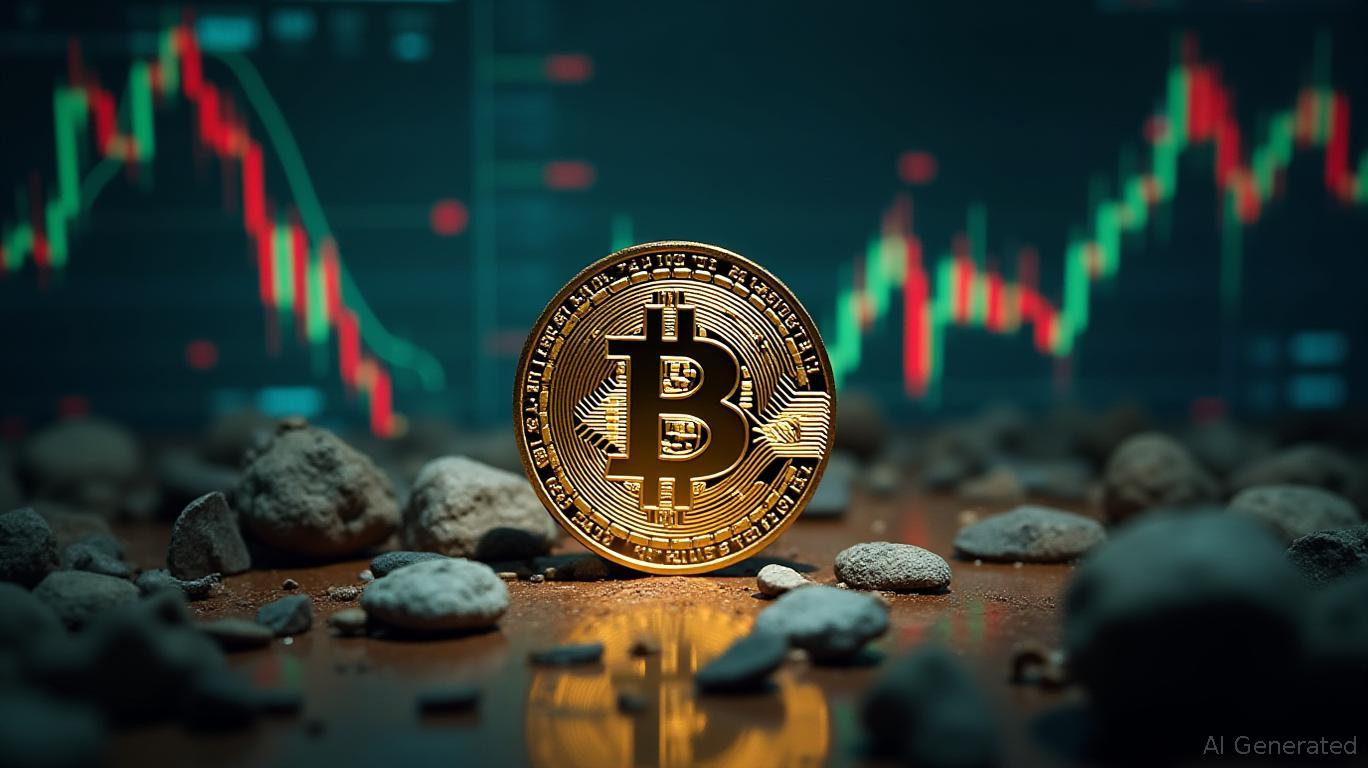Will tokenized Ferraris pull real BTC and ETH flows?
Ferrari is making a pit stop in crypto, but only for its VIP clientele. The Italian automaker plans to issue a “Token Ferrari 499P” that its 100 most exclusive customers can use to bid on a Le Mans-winning race car.
It’s a glossy crossover of luxury and blockchain: own a slice of Ferrari history via digital tokens. But beyond the spectacle lies a harder question: does any of this move real Bitcoin or Ethereum liquidity, or is it just crypto theater?
Luxury goes on-chain, but behind closed doors
Ferrari’s flirtation with crypto isn’t new. In 2023, it began accepting Bitcoin, Ethereum, and USDC for car purchases, handled by BitPay and instantly converted to fiat. The company never actually held crypto; the experience was closer to a payment gimmick than a liquidity event.
The upcoming 499P auction follows the same pattern. It’s run with fintech firm Conio under EU MiCA rules and open only to Ferrari’s “Hyperclub”, about 100 pre-vetted millionaires.
That exclusivity fits Ferrari’s brand but limits crypto’s role. Buyers will almost certainly fund bids in euros or stablecoins pre-cleared through KYC, not by sourcing fresh ETH on exchanges.
The process stays off-chain unless Conio requires crypto deposits or settles directly on public networks. The likely result: an elegant, fully compliant, barely visible transaction trail.
Liquidity and provenance
Tokenization advocates argue it can turn illiquid trophies into tradeable investments. Fractional ownership lets investors buy small stakes in art, cars, or collectibles once reserved for the ultra-wealthy.
Theoretically, a rare Ferrari could be divided into digital shares that trade 24/7 and even serve as loan collateral. Blockchains also embed provenance, serial numbers, ownership history, and authenticity data, appealing in markets rife with fakes.
It’s an alluring idea: prestige becomes programmable. Platforms like Masterworks already sell shares in paintings; others have tokenized whiskey casks, real estate, and fine watches. For luxury brands, tokenization doubles as marketing, a tech-savvy veneer of “financial accessibility” while keeping control over scarcity. Ferrari’s auction leans heavily on that narrative.
Record so far: thin liquidity
Reality hasn’t matched the sales pitch. Tokenized luxury projects often debut with fanfare and fade into illiquidity. CurioInvest’s 2015 Ferrari F12 TDF, split into 1.1 million ERC-20 tokens, was meant to prove fractionalization works.
Today, those tokens trade near $0.15 with negligible volume. The first tokenized art sale, Maecenas’s 2018 Warhol auction, attracted $1.7 million in bids but little secondary trading afterward.
Even projects touting multi-million dollar pipelines, like Curio’s plan for 500 cars worth $200 million, delivered only a handful of listings.
Without active markets, these tokens function more like unlisted securities than digital assets: they exist, but few trade them. Some studies now describe tokenized real assets as plagued by “persistent shallow markets.” The problem isn’t tech; it’s demand. Once the novelty fades, there’s rarely enough buyer depth to sustain prices.
Rails problem: KYC and convertibility
Ferrari’s structure faces the same bottlenecks. Conio will handle custody and settlement; it may allow bids in stablecoins, but the underlying flow can remain entirely fiat. A Hyperclub bidder could instruct Conio to debit a bank account, never touching BTC or ETH. Even if crypto is accepted, instant conversion to fiat, just like Ferrari’s earlier BitPay setup, would leave no on-chain footprint.
The bigger obstacle is convertibility. True crypto integration would mean that Ferrari tokens trade freely, can be swapped for USDC or ETH, or used as collateral in DeFi.
That’s unlikely. Heavy KYC and MiCA compliance will keep the 499P token within a fenced platform. Curio’s Ferrari tokens were geofenced from U.S. users and tradable only on approved venues, a model that isolates liquidity rather than connecting it.
Custody adds another layer of friction. A Ferrari token depends on a trusted intermediary to hold the car and honor redemption: the antithesis of crypto’s trustless design. Without broad recognition or redemption certainty, such tokens struggle to circulate. You can’t exactly post a Ferrari token as collateral on Aave.
Where the real flows happen
Tokenized Ferraris will only influence crypto markets if they require interaction with open liquidity, such as bidding in ETH or secondary trading on Ethereum itself.
Otherwise, the exercise is cosmetic. It’s unlikely to cause measurable shifts in BTC or ETH demand. At best, a few wealthy bidders might liquidate crypto holdings to fund purchases, creating a small uptick in exchange volume. At worst, the auction settles entirely off-chain, producing zero visible movement.
Ferrari’s approach mirrors a broader theme: brands using blockchain as a prestige technology rather than a liquidity engine.
The company gains publicity and a modern sheen without risking volatility or regulatory gray zones.
For the crypto market, that means little new capital inflow.
Could luxury tokenization ever matter?
The idea still holds theoretical promise. Tokenized Treasuries and real estate now account for billions in on-chain value because they plug into crypto’s existing liquidity networks.
If luxury tokens reached that level of interoperability, for instance, a Ferrari token that trades on Uniswap or serves as collateral in DeFi, then real BTC/ETH flows could emerge. But that requires regulatory clarity, credible custody, and genuine investor appetite.
For now, projects like the 499P auction are more about testing infrastructure than driving markets.
They show whether token issuance, legal transfer, and proof of ownership can coexist smoothly. If they can, the groundwork for open-market luxury tokens might be laid later.
Until then, these experiments are confined to narrow circles of compliant wealth.
Takeaway
Ferrari’s tokenization project reflects luxury’s cautious courtship with blockchain: controlled, exclusive, and mostly symbolic.
It will make for striking headlines and glossy marketing reels, but won’t send ripples through Bitcoin or Ethereum liquidity. Tokenized luxury still lacks the openness, volume, and yield conditions that made DeFi thrive.
A tokenized Ferrari may prove the tech works, but it won’t prove that the market cares. For now, the crypto engines stay idling: impressive machinery with very little motion.
Disclaimer: The content of this article solely reflects the author's opinion and does not represent the platform in any capacity. This article is not intended to serve as a reference for making investment decisions.
You may also like
Tech Industry Relieved as U.S.-China Agreement Temporarily Halts Rare Earth Export Restrictions
- U.S. and China agree to a one-year trade framework suspending key tariffs and rare earth export controls to ease tensions. - The deal avoids a 100% U.S. tariff on Chinese goods and delays China's rare earth restrictions critical to tech and defense sectors. - China resumes soybean purchases, benefiting U.S. farmers, while U.S. reduces fentanyl-related tariffs from 20% to 10%. - Success hinges on China's enforcement of rare earth policies and U.S. adherence to export controls, per analysts.

BCH Facing a Turning Point: Upward Drive Meets Key Resistance
- Bitcoin Cash (BCH) approaches $565.1 resistance with technical indicators and derivatives data signaling bullish momentum. - Whale activity and positive funding rates (0.0007%) suggest growing long positions, historically preceding BCH rallies. - A successful breakout could target $651, but failure risks retesting $542.3 support amid 3.5% price volatility. - Derivatives sentiment (1.14 long/short ratio) and expanding MACD histogram reinforce cautious optimism for near-term accumulation.

Bitcoin News Update: Crypto Whale’s Bold Leverage Strategy: Unbroken Winning Run Challenges Market Volatility
- A crypto whale (0xc2a) has achieved 14 consecutive profitable trades, amassing $320M in gains via leveraged BTC/ETH/SOL positions. - Its $366M ETH long position (5x leverage) shows $8.87M unrealized gains, contrasting with profit-taking by other whales like BTC OG. - The whale's $234M BTC exposure (2,041.54 BTC) and $114M 13x leveraged long highlight aggressive institutional-grade strategies in volatile markets. - Market uncertainty around Fed rate decisions and geopolitical risks sees traders split betw

Bitcoin News Update: U.S. and China Reach Trade Agreement, Preventing Tariff Increase and Calming Global Market Concerns
- U.S. and China agree to delay 100% tariffs and suspend rare earth export restrictions, easing global supply chain pressures. - The deal includes resuming U.S. soybean purchases and canceling "fentanyl tariffs," stabilizing bilateral trade ahead of Trump-Xi APEC meeting. - Cryptocurrency markets react with mixed signals, as Bitcoin rises 1.8% amid safe-haven demand, but a $11B whale opens a leveraged short risking $2.6M losses. - Analysts warn long-term success depends on resolving issues like Jimmy Lai's

